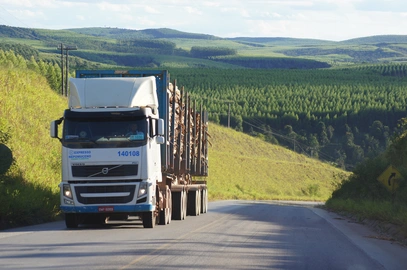Article in Science journal with ZEF contribution on Earth's "roadless areas"
December 15, 2016.
A new global map of roadless areas shows that the Earth’s surface is shattered by roads into more than 600,000 fragments. More than half of them are smaller than 1 km2. Roads have made it possible for humans to access almost every region but this comes at a very high cost ecologically to the planet’s natural world. Roads severely reduce the ability of ecosystems to function effectively and to provide us with vital services for our survival. Despite substantial efforts to conserve the world’s natural heritage, large tracts of valuable roadless areas remain unprotected. The study shows that the United Nations’ sustainability agenda fails to recognize the relevance of roadless areas in meetings its goals.
Recent research carried out by an international team of conservation scientists and published in Science used a dataset of 36 million kilometres of roads across the landscapes of the earth. They are dividing them into more than 600,000 pieces that are not directly affected by roads. Of these remaining roadless areas only 7% are larger than 100 km2. The largest tracts are to be found in the tundra and the boreal forests of North America and Eurasia, as well as some tropical areas of Africa, South America and Southeast Asia. Only 9% of these areas undisturbed by roads are protected.
Roads introduce many problems to nature. For instance, they interrupt gene flow in animal populations, facilitate the spread of pests and diseases, and increase soil erosion and the contamination of rivers and wetlands. Then there is the free movement of people made possible by road development in previously remote areas, which has opened these areas up to severe problems such as illegal logging, poaching and deforestation. Most importantly, roads trigger the construction of further roads and the subsequent conversion of natural landscapes, a phenomenon the study labels “contagious development”.
“Our global map provides guidance on the location of the most valuable roadless areas. In many cases they represent remaining tracks of extensive functional ecosystems, and are of key significance to ecological processes, such as regulating the hydrological cycle and the climate,” says Pierre Ibisch, lead author of the study based at the Centre for Econics and Ecosystem Management at Eberswalde University for Sustainable Development in Germany.
Roadless areas are a cost-effective way to achieve the SDGs
The study shows that the United Nations’ agenda for sustainable development, brought into force in 2015 and now referred to as the Sustainable Development Goals (SDGs), presents conflicts of interest between generating economic growth and safeguarding biodiversity. Some goals threaten the remaining roadless areas. However, limiting road expansion into roadless areas could be the most cost-effective way to achieve Sustainable Development Goals that relate to preserving the world’s natural heritage.
“Road and infrastructure development is often seen as a desirable consequence of human development increasing wellbeing of the local population. But if we take the “sustainable” in the SDGs seriously, we have to find new ways of human development including a better alignment of biodiversity conservation and development goals, especially when it comes to infrastructure development.” says Lisa Biber-Freudenberger, coauthor and Senior Researcher at the Center for Development Research of the University of Bonn, Germany.
The researchers used a large data base generated through crowd-sourcing, the OpenStreetMap platform. “This was the best available source of information to produce a global map for roadless areas although it was clear to us the data were incomplete. Our figures overestimate roadless areas, and we know many of the areas have already gone or been reduced in size”, explains Monika Hoffmann, co-author from Eberswalde University for Sustainable Development who carried out the spatial analyses.
The study is a joint effort of an international team of ten conservation scientists from six countries, all members of the Roadless Initiative of the Society for Conservation Biology (www.conbio.org). Maps and information on the Roadless Initiative at <link http: www.roadless.online>www.roadless.onlinetypo3/#_ftn1.
<link https: www.youtube.com external-link-new-window external link in new>Watch short interviews with the authors of the article
Read the full article in <link http: science.sciencemag.org content external-link-new-window external link in new>Science magazine.



